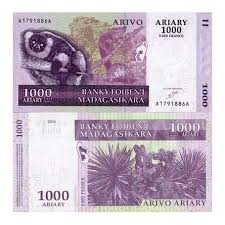Exploring the Wonders of Madagascar: An Island Like No Other

Introduction
Madagascar, the fourth largest island in the world, is renowned for its extraordinary biodiversity and cultural heritage. With over 90% of its wildlife found nowhere else on Earth, Madagascar is a hotspot for conservationists and ecotourists alike. This unique island nation is not only vital for global biodiversity but also offers immense cultural richness, which is often overshadowed by its ecological significance.
The Rich Biodiversity of Madagascar
Madagascar’s isolation from other land masses for over 88 million years has led to the evolution of an array of unique flora and fauna. Notably, the island is famous for its lemurs, amphibians, and numerous plant species, including the iconic baobab trees. According to the World Wildlife Fund (WWF), nearly 5% of all species known to science are found in Madagascar, making its conservation critical. Recent conservation efforts have been intensified as environmental threats such as deforestation and climate change loom large over the island’s ecosystems.
Cultural Heritage and Tourism
The cultural fabric of Madagascar is a tapestry of various ethnic groups, languages, and traditions. The Malagasy people have a rich heritage, with customs and practices intertwined with their environment. Festivals, traditional music, and art reflect their diverse influences. Tourism is a growing sector, with increased interest in eco-tourism and sustainable travel options as visitors seek to experience Madagascar’s unique culture and landscapes sustainably.
Current Challenges
Despite its natural wealth, Madagascar faces significant challenges. Poverty remains rampant, with over 70% of the population living on less than $1.90 per day. Furthermore, rapid deforestation for agriculture and logging threatens Madagascar’s fragile ecosystems. International bodies and local governments are working to address these issues through sustainable development initiatives, but progress is slow and often hindered by political instability.
Conclusion
Madagascar stands as a testament to the beauty and fragility of our planet’s ecosystems. As we continue to learn more about the island’s unique biodiversity and cultural heritage, it becomes imperative to promote sustainable practices that protect these resources for future generations. With ongoing conservation efforts and responsible tourism, there is hope for Madagascar to thrive as a global treasure, both ecologically and culturally.
